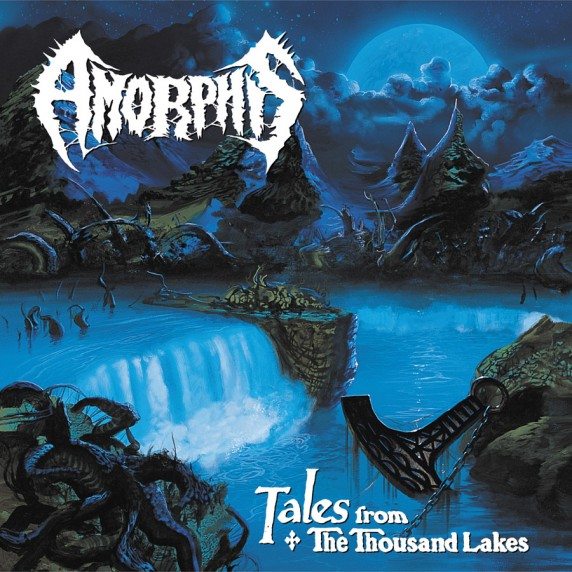
DB HOF NO. 68
The making of Amorphis’ “Tales From the Thousand Lakes”
released: 1994
label: Relapse
—————————————————–
Tales From the Thousand Lakes is a pivotal album. Not just for Amorphis—if it weren’t for loads of ambition, wide-open minds and a bit of dumb luck, this induction would never be—but for death metal post-1994. See, before Amorphis embarked on the journey that would catapult them to international poster boys, they were musically-inclined young bucks emulating their heroes. Like every pre-Internet age band—where the average age is 16—the Helsinki-based quartet was content with grinding out classic(k)s like “Disment of Soul” and “Privilege of Evil” in the comfortable confines of mom and dad’s garage and local jam rooms. As for the rest of the tape-trading underground and indie labels with long tentacles (like Relapse), Amorphis were more than fair-haired foreign kids in Morbid Angel and Immolation T-shirts with a natural ability to belt out seriously dirty death. They were the next generation.
But the lush and mysterious landscapes of Tales From the Thousand Lakes would’ve never happened had guitarist Esa Holopainen, guitarist/vocalist Tomi Koivusaari, drummer Jan Rechberger and bassist Olli-Pekka “Oppu” Laine not written and recorded debut album, The Karelian Isthmus. Inspired by Celtic myth (“Exile of the Sons of Uisliu” and “Sign From the North Side”) and bloodthirsty yarns about the Crusades, Stockholm sound legends and, specifically, Paradise Lost’s Gothic landmark, The Karelian Isthmus rattled battle-worn earth and hummed like tattered angels falling from Heaven. It was death metal for warriors. Actually, it was melodic death metal before there ever was such a thing. However, ’bangers genuflecting to songs “The Gathering” and “Black Embrace” like they were the New Gospel were in for a little surprise. Not long after the venerable Tomas Skogsberg committed The Karelian Isthmus to tape, Amorphis’ musical world exploded into a thousand different colors. It went from the monochromatic—evil, dingy and dank—to the polychromatic—ambiguous, bright and boundless—and the still-young Finns (around 19) never looked back. In short, Amorphis, perhaps like Tiamat, Enslaved, Edge of Sanity and Ulver at the same time, had discovered progressive rock and all the subgenre eccentricities that come with it. —Chris Dick
To read the entire article, purchase this issue from our online store.




